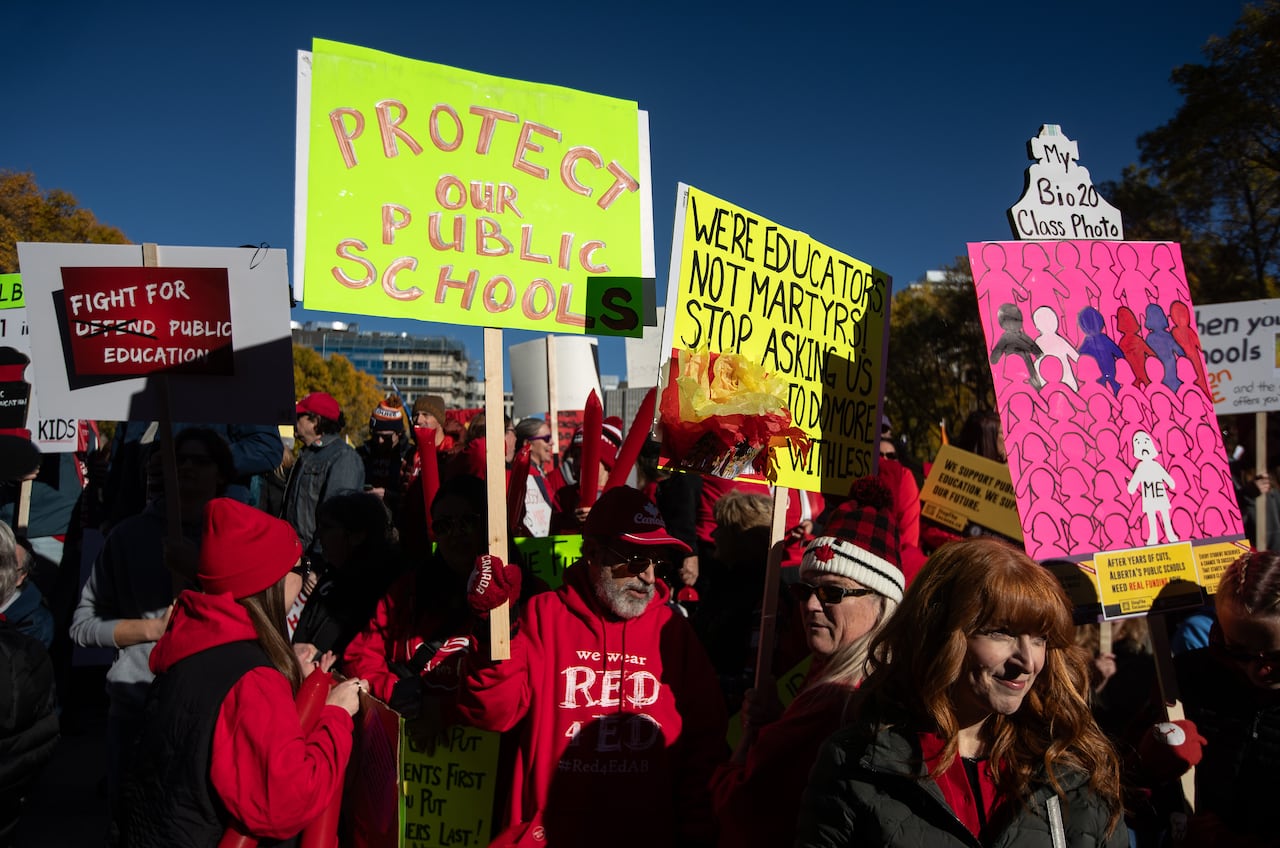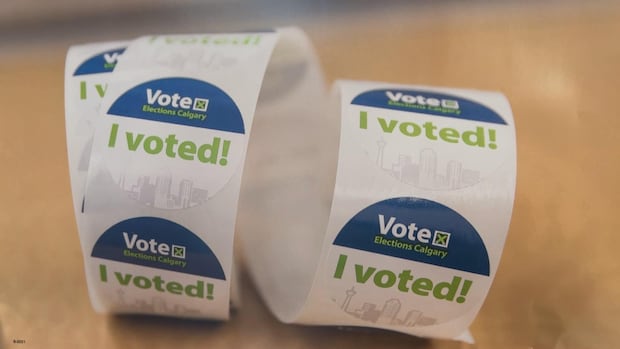The level of voter engagement in local Calgary elections may chronically be lower than federal or provincial contests, but there have been some real turnout stinkers in the city’s modern history.
In 2004, when incumbent mayor Dave Bronconnier ran against a low-profile field highlighted by a notorious political gadfly, a mere 19.8 per cent of eligible voters bothered to show up. Turnout was down at 23.4 per cent when Al Duerr won re-election in 1995, earning more than 100,000 votes while nobody else scored more than 3,000.
There’s widespread concern about plunging turnout as Mayor Jyoti Gondek is seeking a second term, too. But unlike those past examples, polls suggest this is nothing resembling a cakewalk for Calgary’s first female mayor — in fact, she’s in an apparent dogfight to keep her job against several experienced competitors, and to avoid being the first city leader to be toppled since 1980.
Is it something about the candidates in 2025? The complexity of this new party system? The public’s diverted attention? Is it all of the above that has many Calgarians in a none-of-the-above mindset?
Lori Williams warned a mayoral debate audience earlier this month: “Every vote can really make a difference — and it looks like folks aren’t as engaged in this election just yet as people would like.”
Joey Oberhoffner, a civic commentator who presided over a Ward 10 forum in Marlborough on Tuesday, said that participatory democracy only works when people actually participate. “When voter turnout in municipal elections is as low as it is, every informed ballot is worth two or three.”
An early indicator has emerged to signal that turnout will, indeed, be decidedly earthbound. It’s the advance voter numbers from Elections Calgary.
The advance retreat
Levels had more than tripled from 2013 to 2017, and then doubled again by 2021, as residents became increasingly aware of the convenience of avoiding election-day lines.
This contest’s advance voting has shown this trend decidedly reversing. The number of early ballot-markers was down by about one-third compared to 2021, despite the substantial growth in population since the last election.
This means that while about 17 per cent of eligible Calgarians had already voted come election day last time, fewer than 11 per cent have done so in this round.
The latest Janet Brown Opinion Research poll shows a near-tie for the lead between Jeromy Farkas (27 per cent), Gondek (23) and Sonya Sharp (23). That, along with a large number of “undecided” voters could make this race a riveting barn-burner that attracts the passions of the populace — ri-ight?
Brown, however, is struck by how high the number of unsure voters are, given that she was still surveying Calgarians less than two weeks before the Oct. 20 voting day.
She assesses it as indecision mixed with inattention. There’s a lot else out there grabbing people’s political eyes and ears, from the constant gyrations south of the border from U.S. President Donald Trump, the wars in Gaza and Ukraine, all the headlines that Premier Danielle Smith and Prime Minister Mark Carney generate, and the disruptive and dramatic nature of the Alberta teachers strike.
“It’s not garnering a lot of attention, and among those that are putting attention to it, there aren’t many that are completely locked in,” Brown said in an interview.
Brown asked the poll’s 1,000 online respondents not only which mayoral candidate they would vote for, but also who they’d heard of and who they’d consider voting for.
Of those, a full 30 per cent of respondents said they either don’t know who any of the candidates are, or wouldn’t consider voting for any of them. The lion’s share are in that latter camp.
And here’s a figure that indicates how unappetizing people find this menu of options. More people are saying they’re not interested in supporting any of the contenders than actually intend to vote for any one of them in particular.
“I think this portends very low voter turnout,” Brown said.
Party down
The new party system has annoyed voters, and seems to have added more confusion to the civic vote, said Williams, a Mount Royal University policy studies professor.
While Premier Danielle Smith introduced parties in the expectation it would bring political clarity into Calgary and Edmonton elections, Williams said parties and candidates haven’t tended to stake out clear positions for voters.
“The proposals seem to be hedging, or talking about consultation without giving really clear choices,” she told CBC News.
“If it’s going to take more work to find out who the candidates are, what they stand for, what parties are going to do — that complexity, I think, just seems daunting.”
Williams lives in Ward 13, which has a two-way council race between a Communities First incumbent and a Calgary Party challenger. Hardly any lawn signs, she said.
In some suburban neighbourhoods, it seems there are almost as many signs about the teachers’ strike as there are for any municipal candidates.

Add in that other strike, the one that had halted Canada Post service.
It has stymied the city’s attempts to send out voter information cards, upturned the mail-in ballot system, and sent candidates scrambling for a different way to get their brochures to residents.
And campaigners express frustration about getting information out digitally, with the social-media world now scattered among Facebook, Instagram, YouTube, X, Bluesky, LinkedIn, Tiktok, and and and…
It’s long been said that Thanksgiving can be a turning point in Alberta civic elections.
Former mayor Naheed Nenshi’s team has said the family table discussions in 2010 helped tilt the race in his direction, as engaged fans persuaded their aunts, cousins and friends to take a chance on the relative unknown.
But how much discussion will Gondek and Farkas and Sharp and policing levels and zoning for row houses garner, when they’re competing for table time with Blue Jays playoffs and pipelines and U.S. troops in Chicago and hostages in Gaza and what do with the elementary school kids come Tuesday and Wednesday and Thursday?
One thousand Calgary residents were surveyed through the Trend Research Online Panel between Oct. 1 and 8, 2025, under the direction of Janet Brown Opinion Research. The survey was commissioned by CBC Calgary. Quotas were set for age, gender and city quadrant. Minimal weighting was applied to match Statistics Canada population data. As a non-probability online survey, a margin of error does not apply. However, the margin of error for a comparable probability sample would be +/- 3.1 percentage points, 19 times out of 20.







